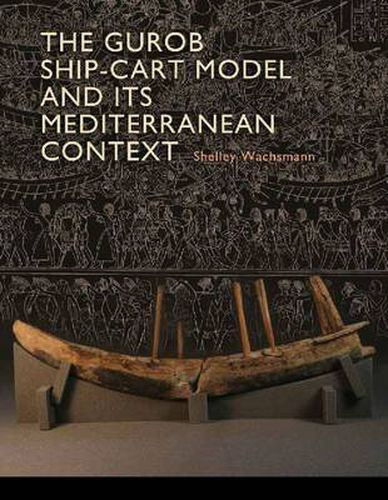Readings Newsletter
Become a Readings Member to make your shopping experience even easier.
Sign in or sign up for free!
You’re not far away from qualifying for FREE standard shipping within Australia
You’ve qualified for FREE standard shipping within Australia
The cart is loading…






When Shelley Wachsmann began his analysis of the small ship model excavated by assistants of famed Egyptologist W. M. F. Petrie in Gurob, Egypt, in 1920, he expected to produce a brief monograph that would shed light on the model and the ship type that it represented. Instead, Wachsmann discovered that the model held clues to the identities and cultures of the enigmatic Sea Peoples, to the religious practices of ancient Egypt and Greece, and to the oared ships used by the Bronze Age Mycenaean Greeks.
Although found in Egypt, the prototype of the Gurob model was clearly an Aegean-style galley of a type used by both the Mycenaeans and the Sea Peoples. The model is the most detailed representation presently known of this vessel type, which played a major role in changing the course of world history. Contemporaneous textual evidence for Sherden-one of the Sea Peoples-settled in the region suggests that the model may be patterned after a galley of that culture. Bearing a typical Helladic bird-head decoration topping the stempost, with holes along the sheer strakes confirming the use of stanchions, the model was found with four wheels and other evidence for a wagon-like support structure, connecting it with European cultic prototypes.
The online resources that accompany the book illustrate Wachsmann’s research and analysis. They include 3D interactive models that allow readers to examine the Gurob model on their computers as if held in the hand, both in its present state and in two hypothetical reconstructions. The online component also contains high-resolution color photos of the model, maps and satellite photos of the site, and other related materials. Offering a wide range of insights and evidence for linkages among ancient Mediterranean peoples and traditions, The Gurob Ship-Cart Model and Its Mediterranean Context presents an invaluable asset for anyone interested in the complexities of cultural change in the eastern Mediterranean at the end of the Bronze Age and the beginning of the Iron Age.
$9.00 standard shipping within Australia
FREE standard shipping within Australia for orders over $100.00
Express & International shipping calculated at checkout
When Shelley Wachsmann began his analysis of the small ship model excavated by assistants of famed Egyptologist W. M. F. Petrie in Gurob, Egypt, in 1920, he expected to produce a brief monograph that would shed light on the model and the ship type that it represented. Instead, Wachsmann discovered that the model held clues to the identities and cultures of the enigmatic Sea Peoples, to the religious practices of ancient Egypt and Greece, and to the oared ships used by the Bronze Age Mycenaean Greeks.
Although found in Egypt, the prototype of the Gurob model was clearly an Aegean-style galley of a type used by both the Mycenaeans and the Sea Peoples. The model is the most detailed representation presently known of this vessel type, which played a major role in changing the course of world history. Contemporaneous textual evidence for Sherden-one of the Sea Peoples-settled in the region suggests that the model may be patterned after a galley of that culture. Bearing a typical Helladic bird-head decoration topping the stempost, with holes along the sheer strakes confirming the use of stanchions, the model was found with four wheels and other evidence for a wagon-like support structure, connecting it with European cultic prototypes.
The online resources that accompany the book illustrate Wachsmann’s research and analysis. They include 3D interactive models that allow readers to examine the Gurob model on their computers as if held in the hand, both in its present state and in two hypothetical reconstructions. The online component also contains high-resolution color photos of the model, maps and satellite photos of the site, and other related materials. Offering a wide range of insights and evidence for linkages among ancient Mediterranean peoples and traditions, The Gurob Ship-Cart Model and Its Mediterranean Context presents an invaluable asset for anyone interested in the complexities of cultural change in the eastern Mediterranean at the end of the Bronze Age and the beginning of the Iron Age.